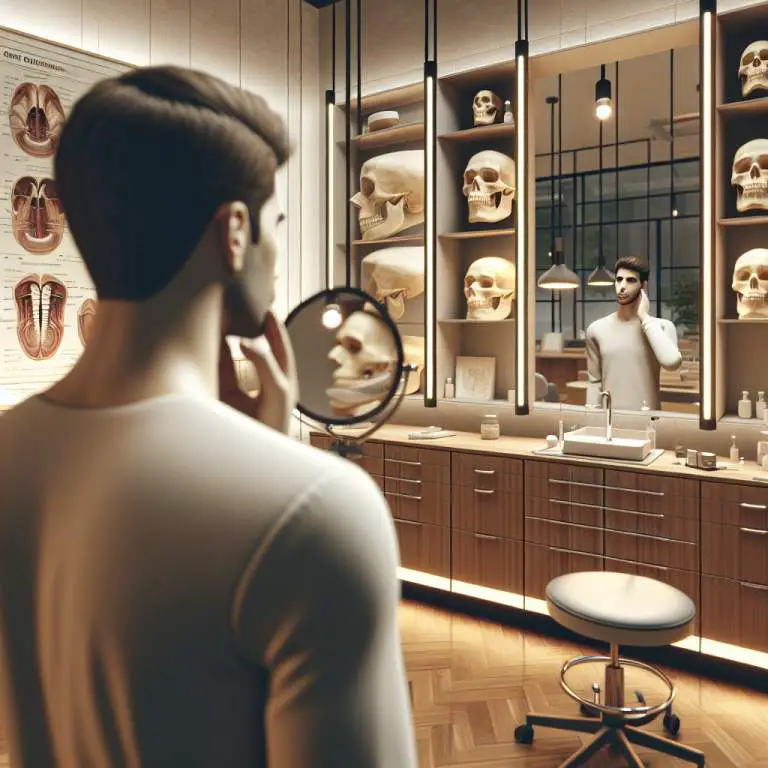How does genetics influence mewing results?
Genetics plays a significant role in determining the results of mewing, which is a technique aimed at improving jawline and facial structure through tongue posture. Your genetic makeup influences the shape and structure of your bones, including your jaw, which can affect how well mewing works for you. While mewing can lead to improvements in facial aesthetics, the extent of these changes is largely determined by one’s genetic predisposition towards bone density and structure.

How does genetics influence mewing results?
When we talk about mewing, it’s important to remember that everyone’s face is a little bit different. This is because of our genes, which are like tiny instructions that tell our bodies how to grow. Some people might see big changes from mewing because of their genes, while others might not notice as much difference.
Genetics can decide how your jaw looks, the shape of your face, and even how your teeth are arranged. So, when you start mewing, these genetic factors play a big role in what kind of results you can expect. It’s like planting seeds in a garden; the type of plant that grows depends on the seed you start with.
What are the basic principles behind mewing?
Mewing is all about how you position your tongue in your mouth. The main idea is to press the whole flat part of your tongue against the roof of your mouth. This isn’t just about the tip of your tongue but includes the middle and back parts too.
By doing this, you’re helping to shape the bones in your face and jawline over time. It’s kind of like training muscles at the gym but for your face. Keeping good posture and breathing through your nose instead of your mouth are also key parts of mewing.
Can mewing actually change facial structure in adults?
A lot of people wonder if mewing can really make a difference, especially for adults whose faces have stopped growing. While it’s true that changing bone structure gets harder as we get older, some adults do notice changes after sticking with mewing for a while.
The changes might not be super dramatic, but things like a more defined jawline or better alignment can happen. It takes patience and consistent effort, just like any other form of self-improvement.
How long does it take to see results from mewing?
If you’re thinking about trying mewing, you’re probably curious about how quickly you’ll see changes. The truth is, it varies a lot from person to person. For some, small improvements might show up in just a few months.
However, for bigger changes or more noticeable results, it could take years of consistent practice. Mewing is more like a marathon than a sprint; it requires dedication and time to really work.
| Factor | Role in Mewing Outcome |
|---|---|
| Genetic Jaw Structure | Determines the baseline structure and potential limitations or advantages for reshaping. |
| Genetic Skin Elasticity | Influences how well the skin adapts to changes in bone structure underneath. |
| Natural Tongue Posture | Genetically influenced resting position of the tongue which can affect ease of adopting correct mewing technique. |
| Facial Muscle Strength | Genetically determined strength may impact the effectiveness of mewing exercises. |
| Bone Density | Affects how easily bones can be remodeled, which is crucial for mewing results. |
Are there any risks associated with improper mewing techniques?
When practicing mewing, it’s crucial to understand that incorrect techniques can lead to problems. Some people might experience jaw pain or discomfort if they’re not doing it right. This is because applying too much pressure or positioning the tongue incorrectly can strain the muscles and joints in the area.
Additionally, improper mewing might also contribute to dental issues. For instance, pushing the tongue too hard against the teeth can potentially lead to misalignment or other orthodontic concerns. It’s important for individuals to research and follow correct methods to avoid these risks.
What are the best practices for effective mewing?
To ensure effective mewing, one should start by learning the correct tongue posture. The tip of the tongue should rest gently against the roof of the mouth, just behind the front teeth without touching them. The rest of the tongue should then be spread out across the palate. This position should be maintained as often as possible throughout the day.
Consistency is key when it comes to seeing results from mewing. Practicing good posture and breathing through the nose instead of the mouth are also essential components of successful mewing. These practices help in reinforcing proper tongue placement and maximizing potential benefits.
How can one measure progress while practicing mewing?
Measuring progress while practicing mewing can be somewhat subjective but there are a few indicators that one might notice over time. Initially, improvements may be felt in terms of better breathing patterns or a more comfortable bite alignment. These changes suggest that your facial structure is responding positively to your efforts.
For a more objective assessment, taking periodic photos from different angles can help track physical changes over time. Comparing these images every few months can reveal subtle shifts in jawline definition or cheekbone prominence, indicating progress in facial restructuring through consistent practice.
Final Thoughts
Mewing offers an intriguing approach to potentially enhancing one’s facial aesthetics through non-invasive means. However, like any technique involving bodily adjustment, it requires patience, consistency, and proper execution to avoid risks and achieve desired outcomes.
By adhering to best practices and monitoring progress carefully, individuals interested in mewing can explore its benefits while minimizing potential drawbacks. Remembering that individual results may vary and consulting with professionals when unsure about techniques is always advisable for optimal safety and effectiveness.







